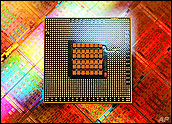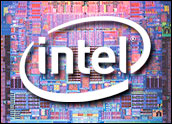
Touting its long history of supercomputing and grid computing expertise and citing the “extreme scale” potential of highly distributed processing, IBM is unveiling a series of cloud computing offerings based on open standards and open source software.
Called “Blue Cloud,” a reference to IBM’s “Big Blue” nickname, the initiative will help enterprises distribute computing across a “globally accessible fabric of resources” instead of merely on local machines or server farms, said the company.
Based on IBM’s Almaden Research Center cloud infrastructure, Blue Cloud will include Xen and PowerVM virtualized Linux operating system images and Hadoop parallel workload scheduling, said IBM. Server management, based on demand, will be handled by IBM Tivoli software which, said the company, can instantly and reliably provision resources across multiple servers while ensuring they meet service level agreements.
Flexing Its Supercomputing Muscle
With cloud computing, infrastructure is shared among systems linked in large pools or clouds. Cloud computing offers several value propositions, Charles King, principal analyst at Pund-IT said.
“One is the overall low cost of industry-standard components, Intel-based servers, in the case of IBM, leveraged with Linux,” King told TechNewsWorld. “The other is developments in what you could call cluster-related technologies. One type of clustering is the high performance computing and supercomputing installations we’ve been seeing increasingly over the past four or five years. Another related area is grid computing.”
Big Blue has lots of experience with both grid computing and supercomputing, King noted. “Almost every major vendor has some experience and projects related to different parts of cloud computing,” he said. The biggest benefit IBM takes to the table is just pure experience. On the high-performance computing side, the company has established itself as true leader.”
Making It Easier
The need for such environments “is fueled by dramatic growth in connected devices, real-time data streams and the adoption of service oriented architectures and Web 2.0 applications, such as mashups, open collaboration, social networking and mobile commerce,” IBM said.
The initial goal of the Blue Cloud effort is to help IBM’s customers easily set up cloud computing environments to test and prototype Web 2.0 applications, according to IBM. Later, the cloud computing approach might enable those companies to simplify and increase the efficiency of large infrastructures with fluctuating demands.
‘What cloud purports to do is take a bunch of low-cost hardware components and, through the magic of software, make them act like much bigger or much more flexible components,” said King
A Cloudy Future
Noting its first Blue Cloud offerings should be available in the spring, IBM gave a demonstration to those attending an event in Shanghai. For the demonstration, it used cloud computing technologies running on its BladeCenters with Power and x86 processors.
The company said it also plans to offer, sometime next year, a cloud environment for System z that will take advantage of a “very large number” of virtual machines. Other plans call for a cloud environment based on highly dense rack clusters, said IBM.
“Blue Cloud represents the next major advance in computing that IBM is uniquely qualified to lead because it builds off of IBM’s decades of experience developing and leading massive-scale computing,” said a company statement.
Blue Cloud will allow data centers to “operate more like the Internet,” according to IBM.
The company said it is working on cloud computing projects with “select corporations, universities, Internet-based enterprises and government agencies.”
Potential for Some Storminess
J. Gold Associates founder and principal analyst Jack Gold equated cloud computing to home electrical supply. “This is a combination of utility computing and virtualization,” he told TechNewsWorld. “Think of asking for power from your outlet in the house. You don’t care where it is actually generated … you just get the power you need. That is what this about — creating a virtual group of computers anywhere and then providing compute power on request.”
While it sounds simple, Gold noted cloud computing is actually “extremely complex” especially when taken to the scale envisioned with Blue Cloud. “IBM is taking virtualization and load balancing/sharing to an enormous scale, and it will be difficult to make it work,” he said. “It may also be hard to monetize all this. Who pays for what and how needs to be answered as well.”
Good Morning, Vietnam
Among them is the Vietnamese Ministry of Science and Technology (MoST).
The Vietnam Information for Science and Technology Advance Innovation Portal (VIP) initiative will help provide Vietnam with “a dynamic, rich content source and foster innovation among the citizens, communities and government organizations,” said a statement issued by MoST Vice-Minister Tran Quoc Thang.
VIP will be based on IBM’s enterprise Web 2.0 Innovation Factory solution and made available through the cloud infrastructure at the Almaden center.





















































